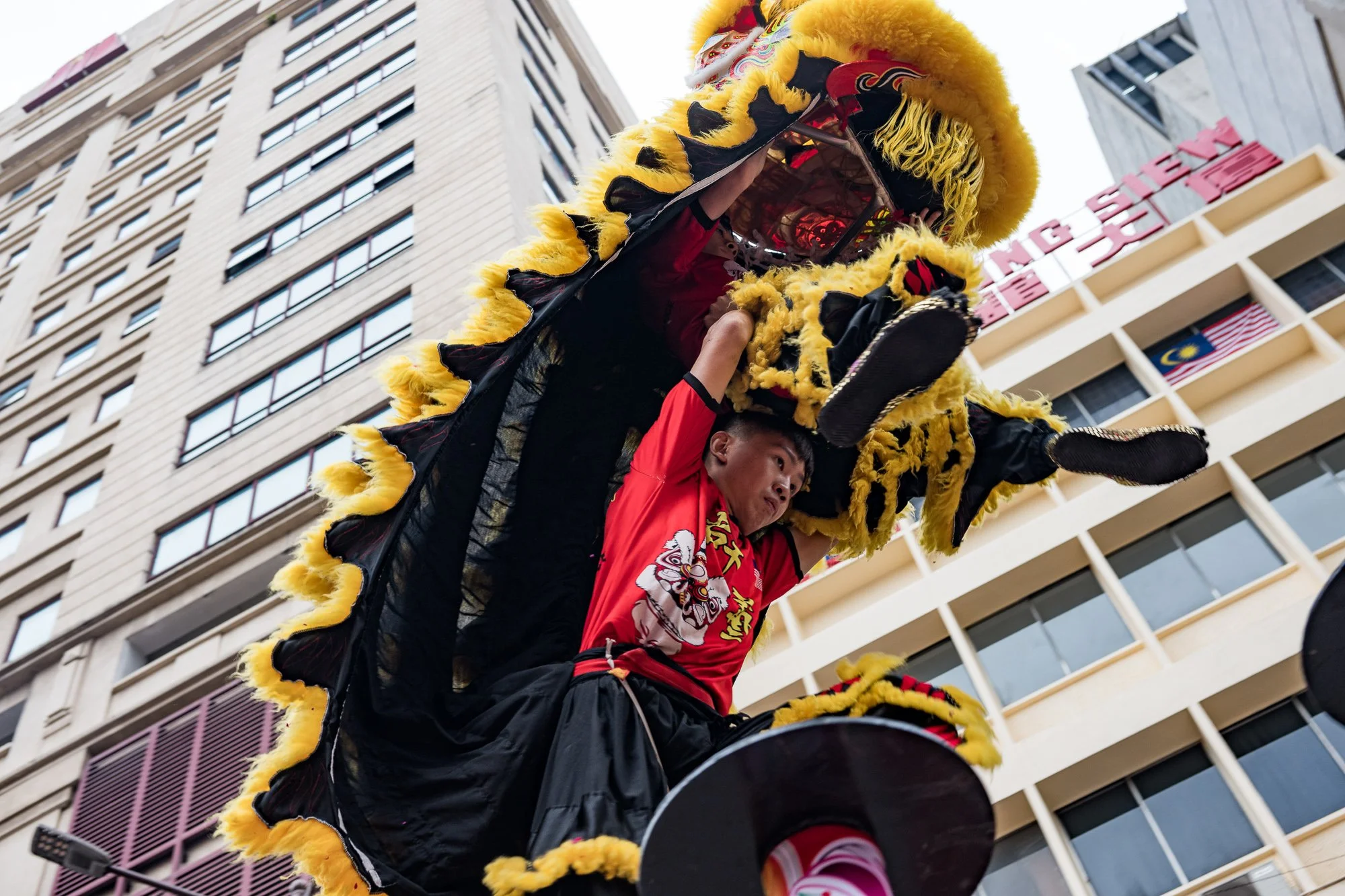#060: A dance of lions

The lion dance is a vibrant traditional Chinese performance that symbolizes good luck and prosperity, often featured during the Chinese New Year and other significant cultural festivities. This dance is not just a form of artistic expression but also a vivid portrayal of historical and mythical elements integral to Chinese heritage.
This Chinese New Year I managed to see several lion dances; taking the family out with me on a few of those occasions, and capturing some of them with my trusty Nikon ZF. It has probably been the most number of lion dances I’ve seen during this festive period in a very long time.
If you didn’t already know, the lion dance consists of two dancers in a lion costume—one controlling the head and the other the body. The costume is striking, usually in red and gold, colors that represent joy and prosperity. The lion's head is intricately designed with features like blinking eyes and a moving mouth, enhancing the realism and interactivity of the performance, kids love it, and some adults are equally afraid of it.
Accompanied by the rhythmic beats of drums, cymbals, and gongs, the dance involves energetic and acrobatic movements that require immense physicality and coordination. As you will see below, the performances become more dramatic with stilts/platforms placed in a line, and the dancers manoeuvre and jump from one to another in acrobatic fashion. The music and rhythm that accompanies the dance not only guide the lion’s movements but also symbolize the lion's spirit and vitality.
The performance traditionally serves to drive away evil spirits and attract fortune. It often features the lion chasing symbolic items like a pearl or lettuce, the latter typically concealing a red envelope with money. Successfully capturing these items without destruction symbolizes the lion's ability to secure and maintain prosperity. If you are then lucky enough, the lions will throw oranges out into the crowds, to be caught, bringing luck to the catcher.
More than mere entertainment, the lion dance is a cultural ritual steeped in symbolism and community significance. It fosters a sense of pride and continuity, linking participants and spectators to their collective cultural heritage and aspirations for prosperity.
This year, I went out and about and managed to see a few lion dances in and around Petaling Street, KL’s Chinatown area, one in a mall and one at a friend’s office. There were so many others going around, and you could see the dance troops being ferried from one place to another almost daily in the past two weeks around town in lorries.
The two images below were taken in one of the larger malls in KL using my Pixel 6 mobile phone (straight out of the camera, no processing) as I didn’t bring out the main camera that day. Almost every major mall in town had sessions of lion dances going on in the past two weeks.
The rest of the photos below were all taken with the Nikon ZF with the 40mm/f2.0 lens. An awkwardly narrow lens for shooting wide, open events like these lion dances, but I managed to keep a nice distance and managed to get some fun shots in the process. Most of the street scenes were from two separate lion dance sessions outside the Guan Di Temple Chinatown.
Hope you like these photos as we now progress through the year of the snake and hope it brings you all wealth, health, and prosperity.
Gong Xi Fa Chai!
Cheers.





























